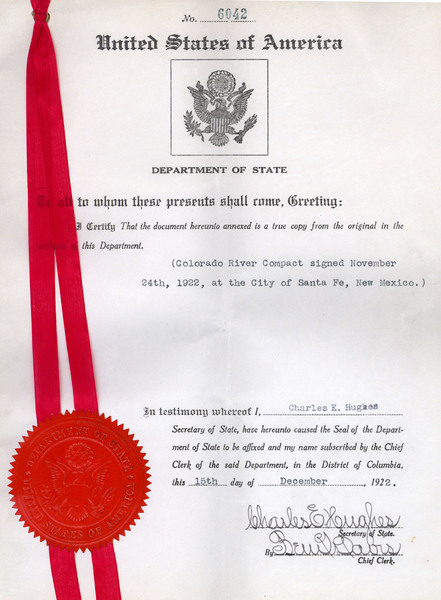Dublin Core
Title
Description
Did you know a quarter of Utah’s water comes from one river? That river is the Colorado, and a 1922 agreement called the Colorado River Compact allocates Utah its share. The various agreements and legal decisions placed on the Colorado River over the years are collectively known as “the Law of the River,” and the laws governing the Colorado form the backbone of all water infrastructure in the American West.
The Colorado River rises high in Colorado's Rocky Mountains before making its 1,750-mile journey to the Pacific Ocean's Gulf of California. Along its way the river gathers run-off from tributaries like the Green in a drainage basin totalling 244,000 square miles and carves out the dramatic landscape of Arizona’s Grand Canyon. It is the most legally regulated river on Earth, partly because of water scarcity in the West.
In the early 1900s, explosive population growth in Southern California made other Western states worry that California’s seemingly unending thirst would lay claim to the bulk of Colorado River water and block anyone upstream from making later use of it. What if earthworks built by California locked in place an inequitable infrastructure, forever in favor of the Golden State?
With these concerns in mind, representatives from seven states -- including Utah -- met in 1922 to begin work on an expansive interstate compact to regulate and share the river. When they first met, representatives agreed to split the Colorado River Basin watershed into two sections: the Upper Basin consisted of Wyoming, Colorado, Utah, and New Mexico. The Lower Basin included Nevada, Arizona, and California. The agreement also stipulated how much water flow each section would claim: 7.5 million acre-feet went to the Upper Basin while 8.5 million went to the Lower Basin.
For eleven long months in 1922, commissioners hammered together the Colorado River Compact. Not only did the process take longer than everyone expected, but the agreement itself contained oversights and loopholes that set up the Compact for years of future legal battles.
Creator
Source
_______________
See Jim Kichas, “The Law of the River: Compact and Development,” and “The Law of the River: Developing the Upper Basin,” December 2021, Utah Division of Archives and Records Service, accessed January 2022; Marc Reisner, Cadillac Desert: The American West and Its Disappearing Water (New York: Penguin Books, 1993); Donald Worster, Rivers of Empire: Water, Aridity, and the Growth of the American West (New York: Oxford University Press, 1992); “Colorado River,” Utah Division of Water Resources, accessed January 2022.

